I was invited to give a talk last week at a local incubator (Eastside Incubator) on how startups can incorporate customer experience management into their companies. Thanks to Phuoc Do from 1001 Mentorsfor the invitation. The slides to my talk are at the end of this post. The content of the post below should provide good support for the content of the slides.
Successful companies understand that, to ensure long-term sustainable growth, they must focus on providing a great customer experience. Across the entire phase of the customer life cycle (e.g., marketing, sales and service), companies lay out a strategy that will, hopefully, ensure a great customer experience and increase customer loyalty. This process of understanding and managing the customer experience is formally referred to as customer experience management (CEM). Before I provide some advice for startups, it is important to review what we know about what works in these program.
Customer Experience Management Programs
A CEM program consists of a set of organized actions that support the goal of CEM. While a CEM program has many moving parts, an easy way to organize those pieces is depicted in Figure 1. A CEM program has several major components:
- Strategy addresses how companies incorporate CEM into their long-term plans/vision/mission to help achieve its objectives and goals
- Governance describes the formal policy around the CEM program: Rules, Roles, Requests
- Business Process Integration involves embedding CEM processes/data into other business operations
- Method addresses the means by which customer feedback is collected and what gets measured
- Reporting addresses analysis, synthesis and dissemination of customer feedback
- Research is concerned with how companies provide additional customer insight by conducting deep dive research using different types of customer data
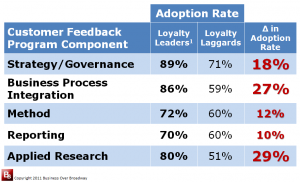
Figure 2. Adoption Rates of Customer Feedback Program Practices of Loyalty Leaders and Loyalty Laggards
The success of your CEM program depends on how you structure it. In a study examining (see Figure 2) the differences between loyalty leading companies and loyalty lagging companies, I found that loyalty leaders, compared to their loyalty lagging counterparts, adopted specific business practices in how they approach CEM. Generally speaking, I found that loyalty leading companies have top executive support of the CEM program, communicate all aspects of the program company-wide, and integrate customer feedback to other business data (operational, financial, constituency) to gain deeper customer insights.
The Challenge for Startups
Founders of startup companies have limited resources. Coupled with plenty on their plates, founders appear to be unable to invest in programs that support processes outside of standard business practices (e.g., marketing, sales and services). They are responsible for every aspect of the company, from raising capital and creating products to implementing a marketing plan to providing support. There often is very little time/resources to devote to a formal CEM program.
A growing startup, however, can still implement key CEM best practices in a cost-effective way. Below are three things startups can do to integrate the voice of the customer in their business processes and begin to build a formal CEM program.
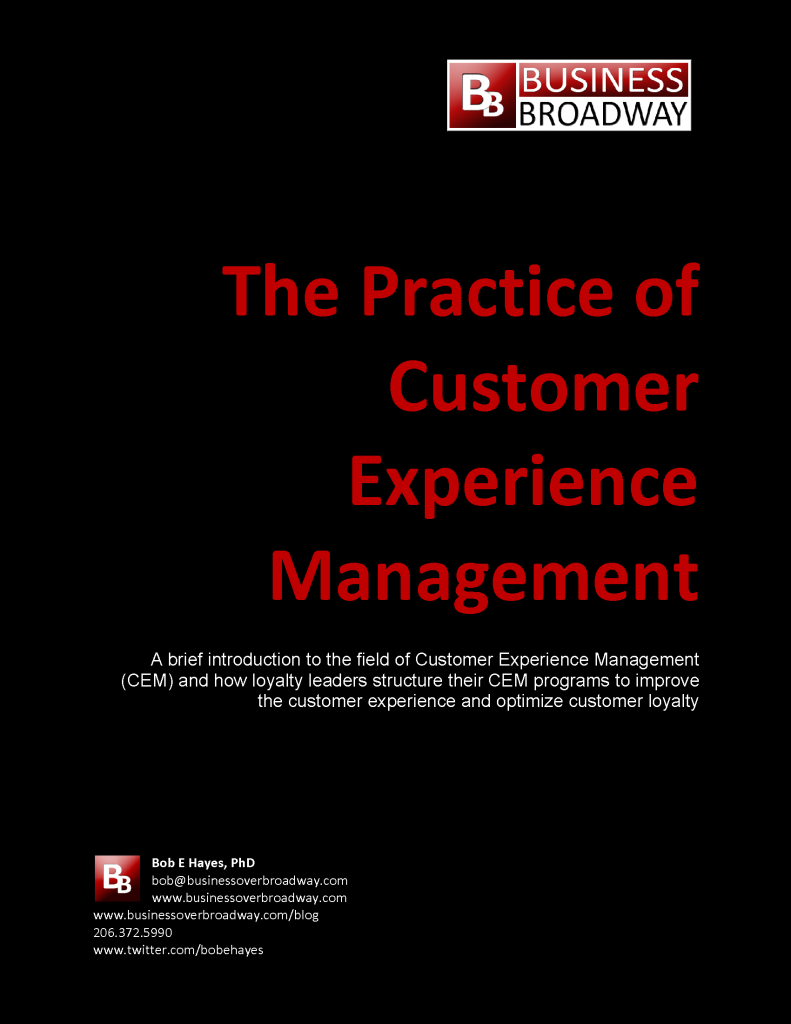
A free five-page introduction to the practice of customer experience management. To download the paper, simply 1) click the image, 2) tweet about it and 3) download.
1. Start with the Executives
A good first place to start your CEM journey is at the top of your organization. Through their actions and established policies, top executives set the tone and culture of the company. Without their their support, the success of any program is likely to fail. We know that companies who have executive support around the CEM program have greater success (e.g., higher customer loyalty, higher satisfaction with their CEM program) compared to companies with little/no executive support.
Here are a few things start-ups can do to improve executive-level support:
- Incorporate a customer-focus in the vision/mission statement. Support the company mission by presenting customer-related information (e.g., customer satisfaction/loyalty goals) in the employee handbook. Use customer feedback metrics to set and monitor company goals.
- Identify an executive as the champion of the CEM program. A senior level executive “owns” the customer feedback program and reports customer feedback results at executive meetings. Senior executives evangelize the customer feedback program in their communication with employees and customers. Senior executives receive training on the customer feedback program.
- Use customer feedback in decision-making process. Include customer metrics in company’s balanced scorecard along with other, traditional scorecard metrics. This practice will ensure executives and employees understand the importance of these metrics and are aware of current levels of customer satisfaction/loyalty. Present customer feedback results in company meetings and official documents.
 2. Collect Customer Feedback
2. Collect Customer Feedback
You cannot manage what you do not measure. These words ring true for your CEM program. Loyalty leaders collect customer feedback using a variety of sources (surveys, social media, brand communities). When you collect customer feedback, you need to consider what you measure and how you collect the feedback.
Here are a few things start-ups can do around collecting customer feedback.
- Conduct an annual / bi-annual customer survey. While loyalty leaders collect customer feedback using a variety of sources (e.g., relationship survey, transactional survey, web survey social media), a good start would be to start with a relationship survey conducted annually/bi-annually. See the section on Customer Relationship Diagnostic below to learn about what to ask in your survey.
- Measure different types of customer loyalty. Selecting the right mix of customer loyalty questions will ensure you can grow your business through new and existing customers. Determine the important customer loyalty behaviors (retention, advocacy, purchasing) and measure them.
- Use automated (e.g., Web) tools to collect and report customer feedback metrics. Web tools not only facilitate data collection, but with the ever-increasing adoption of a Web lifestyle, they are also becoming a necessity. Data collection via the Web is cost-effective, allows for quick integration with other data sources and speeds reporting of customer feedback. There are several free survey services you can use to start collecting customer feedback: SurveyMonkey, Zoomerang. While these free services provide reports, they do not allow you access to the raw data. Also, you might consider using Limesurvey, an open-source, enterprise-quality survey engine; Limesurvey allows you to access your raw survey data.
- Improving ROI: Resources are tight for startups. Startups that spend their resources wisely will outperform those who do not. Customer surveys (and accompanying analysis) can help you understand where you need to make improvements (e.g., make investments) that will improve customer loyalty
- Beating your competition: Knowing where your brand sits in the competitive landscape impacts your growth. Top tier companies have customers who are more willing to buy more from them compared to bottom tier companies. Collecting customer feedback can help you identify what you need to do to beat your competition and improve your growth.
- Acquiring capital investments: Investors use a lot of different information to identify investment potentials. Set yourself apart from other startups seeking money buy providing investment professionals information about the quality of your customer relationships. Collecting customer feedback and using customer feedback metrics (e.g., customer loyalty) can help you estimate the monetary value of your startup. Help investors understand the quality of your relationship with your customers.
3. Share Feedback Results Company-wide
A good way to build your startup around your customers is to share the results of your customer survey with the employees.
- Share customer feedback program results throughout the company. Use Web-based reporting tools to allow easy access to the results by all employees. Regularly publish customer feedback results to all employees via emails/reports.
- Use simple statistics to convey results and try to incorporate something visually interesting about the results. Avoid sharing complex results with employees that might confuse them rather than educate them. Use simple statistics like means and frequencies. Avoid using difference scores (e.g., commonly called net scores) as they are ambiguous and unnecessary. Consider using visually stunning ways to present your data. A visually stunning presentation of the data, compared to bar graphs, will more likely be examined by the consumers of your reports.
Customer Relationship Diagnostic: Your Customer Survey
So, what questions do you include in your customer survey? In a series of studies, I found that short, concise surveys (N <20) provide just as much insight into understanding the customer experience as longer surveys (N > 40). Based on this research, I created a short, reliable, valid and useful customer survey called the Customer Relationship Diagnostic (CRD). The CRD includes question to measure four key areas:
- Customer Loyalty: Ask customers about their likelihood of engaging in different types of customer loyalty behaviors
- Satisfaction with the Customer Experience: Ask customers about their satisfaction with general business areas (e.g., product quality, support, service, communication)
- Relative Performance (Competitive Benchmarking): Ask customers how they view you compared to the competition (where you rank and why).
- Company-Specific: Ask customers about question unique to your need (e.g., marketing benefits, decision influencer)
Summary
Startups, to succeed, need to build a company that encourages customers to recommend their brand, buy more from them (as startups expand their product line / service offerings) and remain as a long-term customer. How can startups implement a CEM program? Based on best practices research in CEM, I offer three suggestions on how startups can begin incorporating customer feedback into their DNA.
Startups can begin by educating the leaders on the importance of the customer experience and customer loyalty to business success. The outcome of this education process is designed to instill a sense of importance of the customer in the mindset of the senior management team. Startups can easily collect customer feedback through an annual/bi-annual survey. This survey needs to focus on measuring these key areas about your customer: 1) customer loyalty, 2) customer experience, 3) how they view you relative to the competition and 4) company-specific questions. Finally, startups need to communicate the results of the customer feedback to the entire company. Sharing customer feedback company-wide lets employees know that senior management conveys the importance of the customer throughout the company.
The formation of a CEM program early in your company’s history helps build a culture that is focused around the customer. Having a formal CEM program lets potential job candidates understand the importance of the customer and helps create a culture that is focused around the customer. As your company grows, your CEM program will mature and expand, incorporating other ways of collecting customer feedback (e.g., transaction surveys, social media) as well as other sources of business data to help you build a solid customer research program.
Additional Readings to Get You Started
- Customer Experience Management Defined: A good first start is to get an overview and definition of customer experience management.
- The Practice of Customer Experience Management: An Overview: Here is an explanation about what a CEM program looks like in practice.
- Best Practices in Strategy and Governance: Here is an overview of best practices in strategy and governance.
- Best Practices in Method and Reporting: Learn about best practices in collecting and reporting customer feedback.
- Two Things Everyone Needs to Know about your CEM Program: Learn how to share information about your customers to employees as well as the customers.
- Asking the right Customer Experience Questions: Learn about the types of questions you need to ask in a customer survey
- Four Ways to Improve your Customer Survey [INFOGRAPHIC]: If you don’t like reading much, here is an infographic that summarizes best practices in collecting customer feedback via surveys.
Presentation on Customer Experience Management and Startups at Eastside Incubator on 11/20/2012


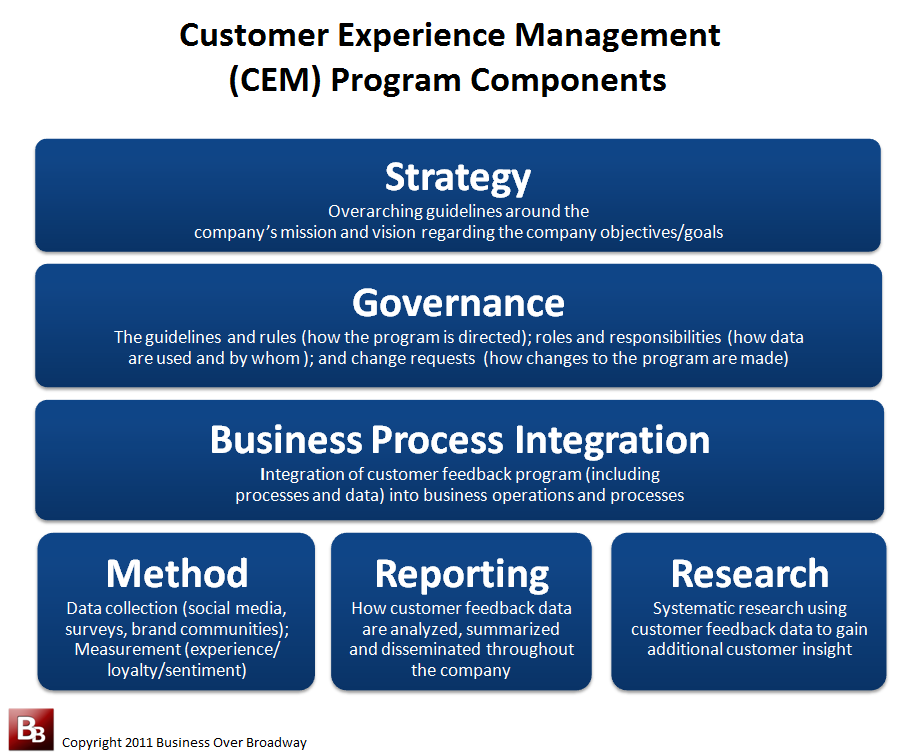
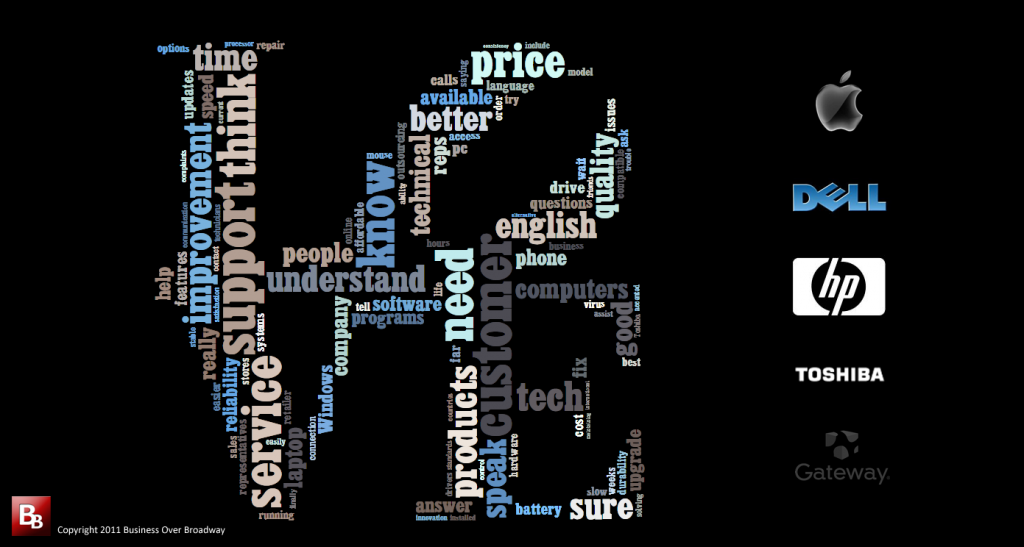
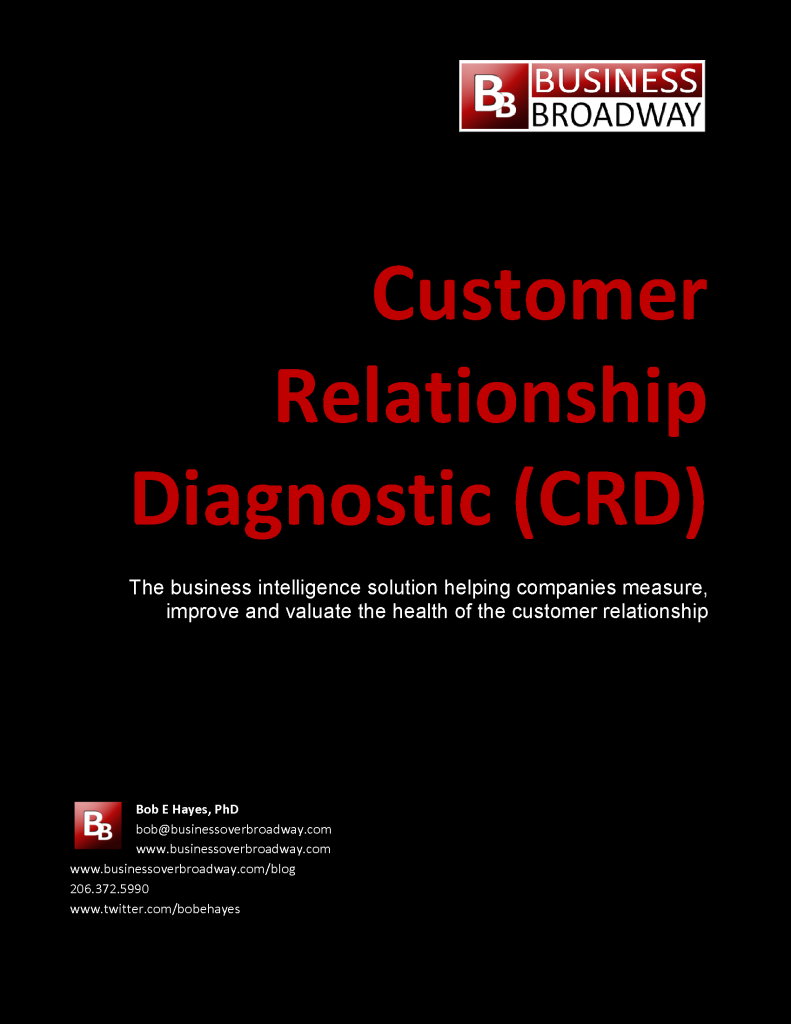

 Beyond the Ultimate Question
Beyond the Ultimate Question Measuring Customer Satisfaction and Loyalty (3rd Ed.)
Measuring Customer Satisfaction and Loyalty (3rd Ed.)
[…] I was invited to give a talk last week at a local incubator (Eastsid… (How to get your #cem program started in your new startup. […]
[…] 3 Customer Experience Management Tips for Startups From businessoverbroadway.com – Today, 8:27 AM […]
[…] 3 Customer Experience Management Tips for Startups From businessoverbroadway.com – Today, 1:55 PM […]
[…] This information can also be used by you to benefit you and your company using social media.If you've ever worried that you'll never be able to make more money, it is time to learn about all o…things that you might ordinarily have missed. It's funny because you have the feedback form on your […]